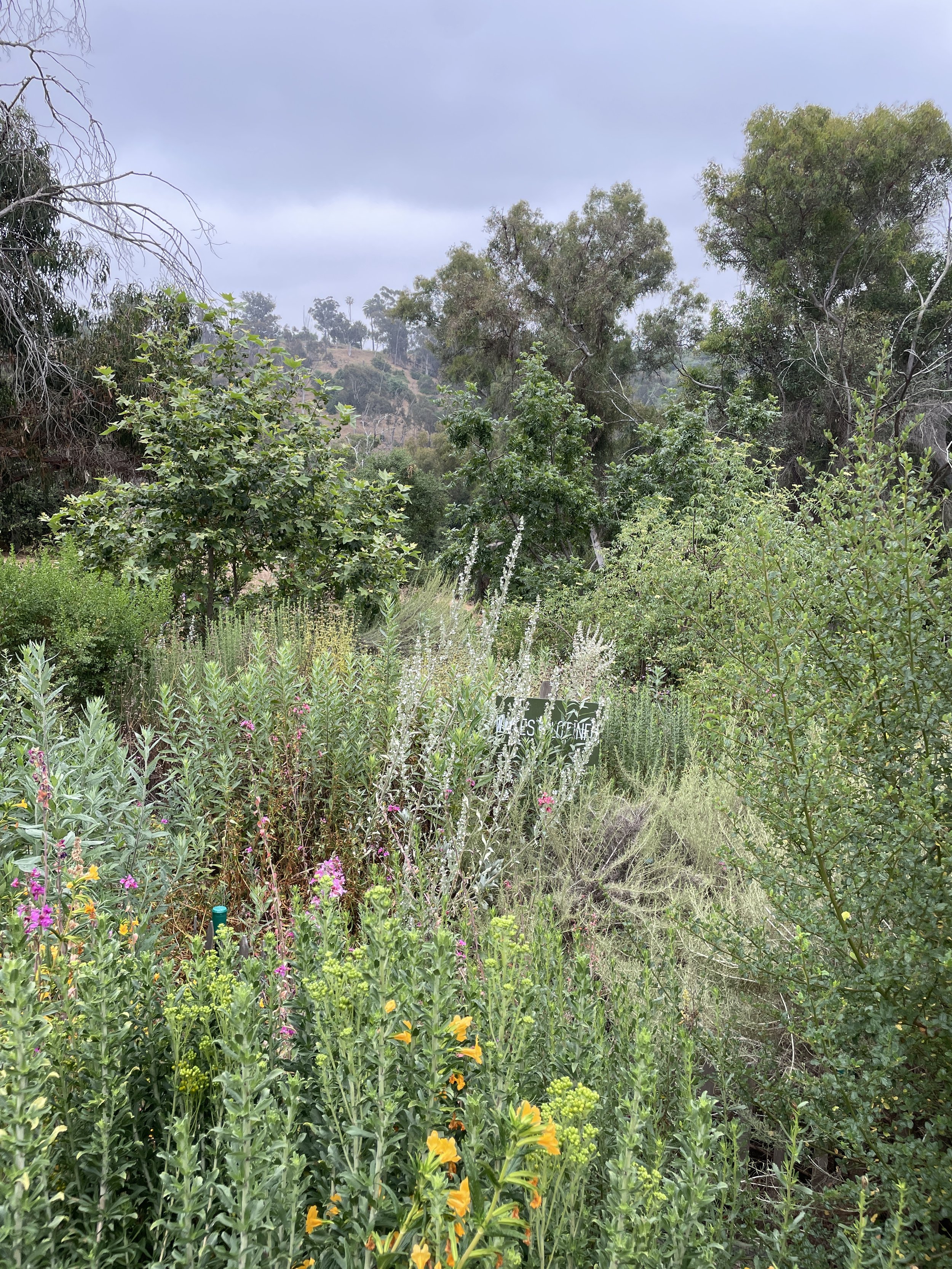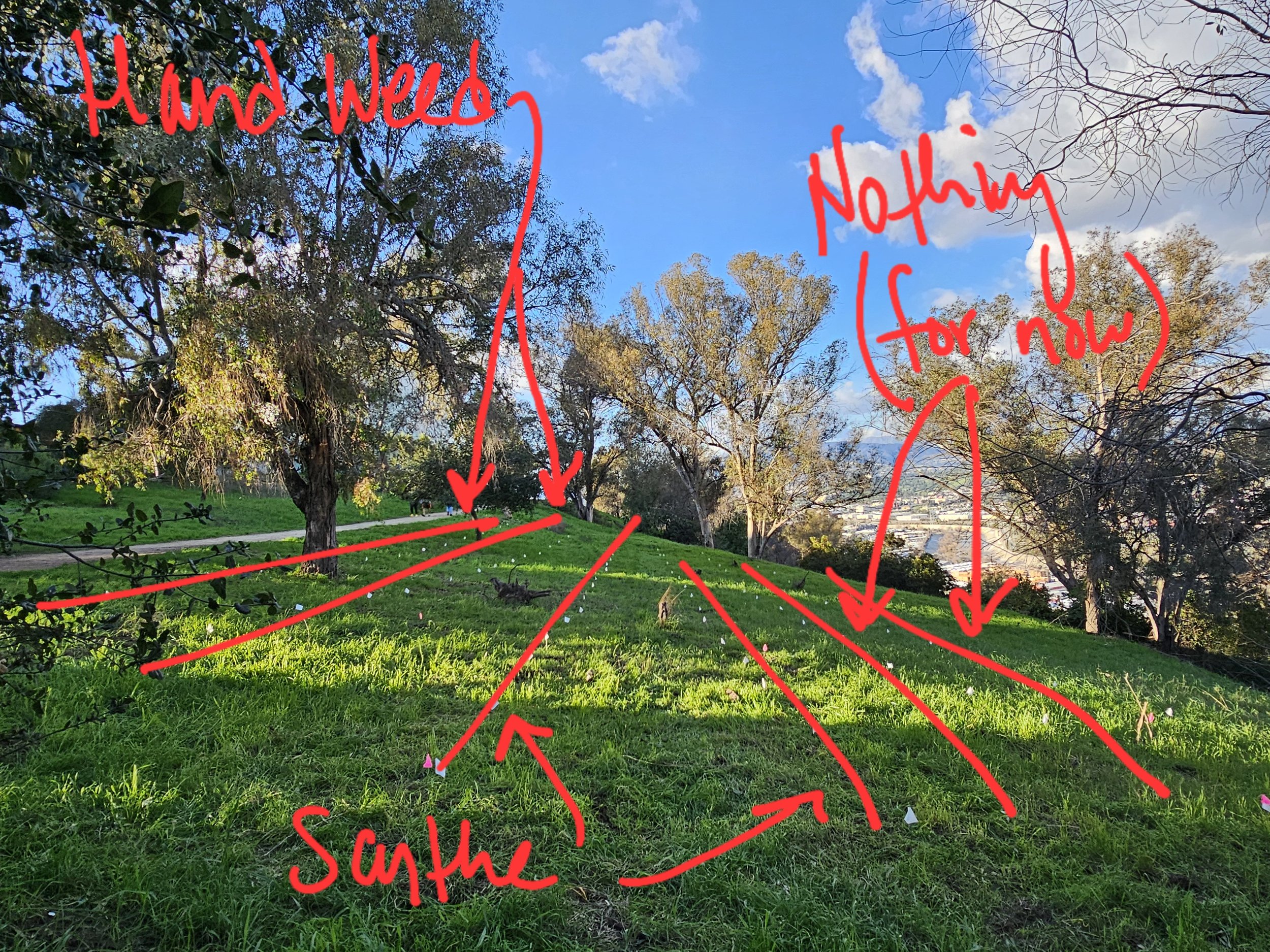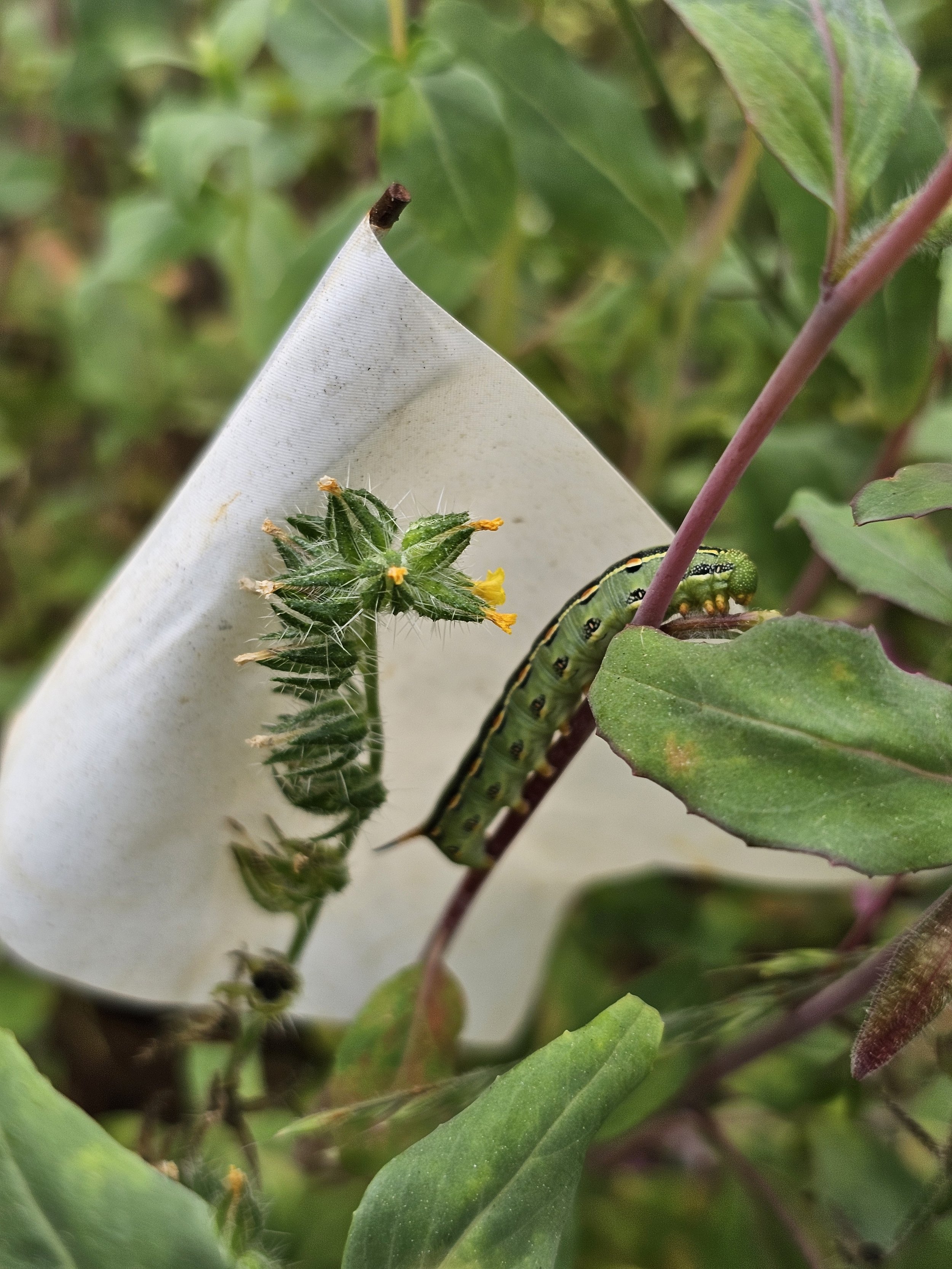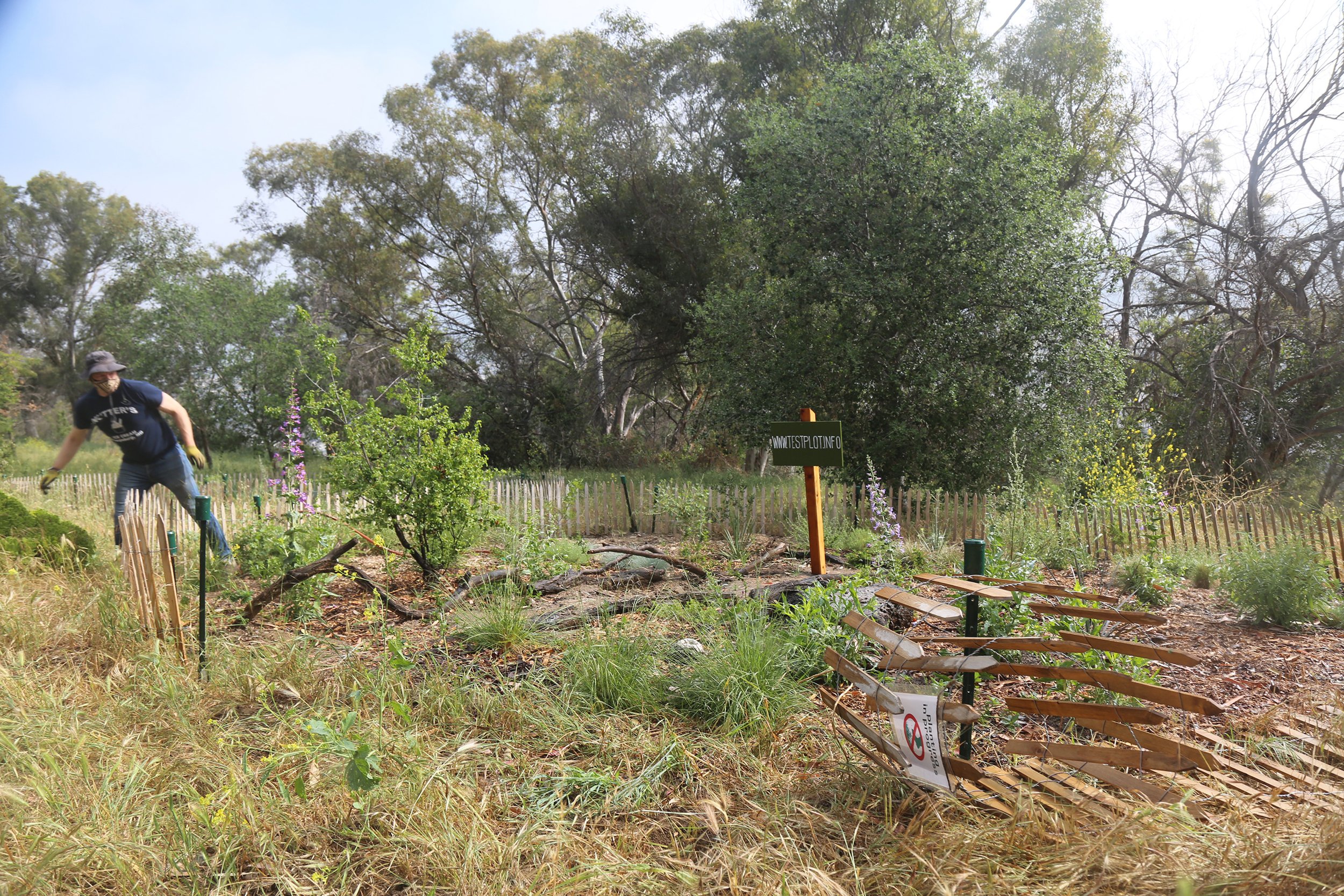Closest address is 2221 Park Dr, Los Angeles, CA 90026. See map for exact plot location.
The plots are located around the Marian Harlow Memorial Grove. Park along Park Dr. and walk north along the Elysian Park trail for 3-5 mins. The plots are spread out around multiple hillsides.
Terremoto, Saturate and the Citizens Committee to Save Elysian Park (now Friends of Elysian Park) started the first Test Plot in 2019. As neighbors to the park, we noticed the sad state of many of the naturalized areas… broken irrigation, rampant invasive species, and the typical signs of deferred maintenance. We thought, can we help Rec & Parks take care of this treasured park? What can we do to establish a more robust native ecology, to create a patch of beauty and a home for more critters? And what are the minimum inputs to do so? Visit the volunteer tab for more information on upcoming events.

INTRO
Our semi-wild paradise, Elysian Park is LA’s second largest park and home to rugged terrain, deep ravines and steep hills, all just north of downtown LA (Elysian is derived from the Greek word paradise). The land, settled by the Tongva Indians since the 1500s, was part of the original land grant of 17,000 acres taken by Spanish California to establish the Pueblo of Los Angeles in 1781. In subsequent years, the hillsides were denuded of the indigenous Coast Live Oak and California black walnut for timber and firewood. Other known land uses include a Jewish cemetery and a quarry for building stone mined in the area. In part because of the growing American appreciation for wild, sublime landscapes, Elysian was protected as parkland. It became LA’s first park in 1886. Unlike Westlake (today MacArthur) Park and Central Park (today Pershing Square), Elysian was not improved with formal landscaping and popular amenities like recreational lakes, boathouses, and band shells. Instead, lucky for us, it remains an unruly unfinished landscape.
THE TEST
As the first Test Plot, the questions were simple: will people show up, will the plants live? The answers were yes and (mainly) yes. We learned many lessons. In the first summer, the grasses were decimated by gophers. We have slowly migrated the planting palette from our favorite garden natives, to those that thrive best on a degraded, exposed hilltop with areas of fierce sun exposure. The fundamental approach - what are the minimal resources (water, materials, labor) needed to establish a more robust ecology, a place to linger, a home for critters? - continues to feel right.
2024 UPDATE
Community volunteers continue to come, to water, to chat with neighbors, to offer suggestions and observations. Two super stewards, Dante and Anthony, led an effort to add an additional seed only plot. Over the last two winters, blessed with excess rainfall, we’ve spread seeds, made wildflower meadows and slowly taken over the hillsides surrounding the Marion Harlow Memorial Grove. Over the last summer, we’ve started to tackle the challenge of brush clearance more directly. How can we work with the scorch and burn techniques so common in the name of fire safety? We’re starting to build a coalition of like-minded organizations, from Garden City LA to Coyote y Macehualli, to work towards a maintenance approach that respects and encourages native habitat.
PRESS
—"Rewilding the land brings back birds, bees and butterflies," KCRW, April 2022
—A+D Museum, "Bigger than a Street, Smaller than a City" Runner Up, 2021
LOG
INATURALIST PROJECT
TEAM
—TERREMOTO: Jenny Jones, Dani Vonlehe, Dante Iñiguez, and all of the office
—SATURATE: Max Kanter + team
—Friends of Elysian Park
YEARS
—Winter 2019-20: Initial planting Plots 1-4 —Dec 2020: Replacement planting Plots 1 & 2 —March 2021: Expanding beyond the plot perimeter planting —Nov 2021: Interplanting in all 4 plots —Jan 2022: Introduction of new seed only plot —2023-2024: Rainbow River + Row plots
MONITORING
—Spring 2021: Colin Amos, Robert Andrade, Danielle Velazco, Danielle Vonlehe. —Summer 2021: Colin Amos, Hannah Flynn. —Fall 2021: Hannah Flynn. —2022-2023: Nina Weithorn, Dani Velazco
THANK YOU
—Los Angeles Department of Recreation and Parks (RAP)
—Theodore Payne Nursery
—Tree of Life Nursery
—Chesbro Tree Care (for the mulch)








ORIGINS
Our little plot stands out amidst the the browned out hillsides of summer in LA. Seen here in 2019, the circle (one of four) comes from the throw of a sprinkler, attached to a nearby hosebib. From this 30’ radius, the plot is anchored around an existing sycamore tree, which was suffering on the exposed hillside far from its riparian roots. Over the last few years, the circle plot has transferred into the hillside restoration you see in the cover image.
















